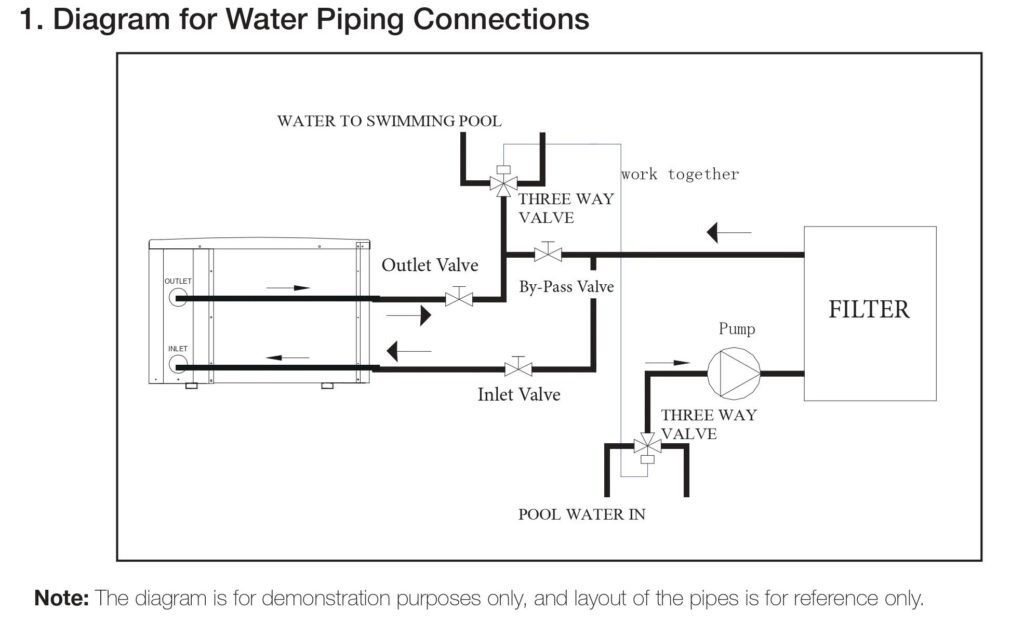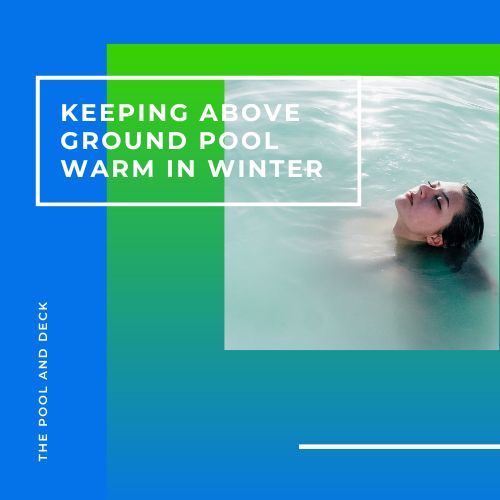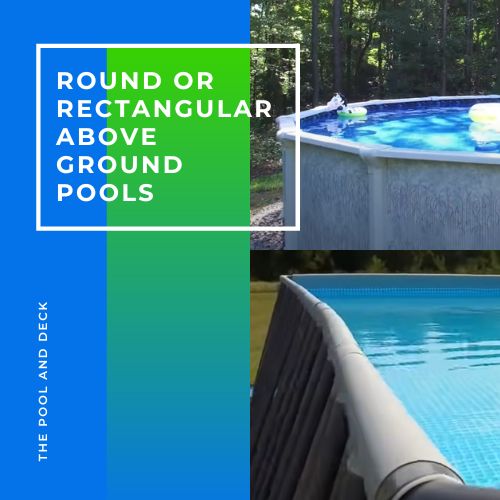Can I Add an Electric Heater to My Pool? (9 Important & Helpful Facts!)
As an Amazon Associate, I earn from qualifying purchases.
Table of Contents
Can I Add an Electric Heater to My Pool?
Do you love swimming but hate cold water? Of course! Most people are like you. Now would you not like to extend the pool season beyond summer into fall. So you wonder if you can add an electric heater to your pool?
Yes, it is possible and relatively simple to add an electric heater to your pool. The electric pool heater needs to be installed between the pool filter and the pipeline leading to the return jets.

There are several types of pool heaters but they work on the same principle. Clean water exiting from the pool filter is passed through the pool heater. The heated water is then released into the pool through the return jets.
The key difference between the different types of pool heaters is the source of energy.
The advantage of an electric pool heater is that it is extremely convenient to operate. All you need to do is push a switch. Hook it up with a thermostat and the pool heater gets switched on or off, based on the pool temperature setting you desire.
Can I Add an Electric Heater to an Existing Inground Pool?
Ideally you should install the electric heater along with other pool equipment such as pump, filter, etc. However, there can be several reasons why this may not have been done.
Not to worry! Installing an electric pool heater on an existing inground pool is quite common. It is quite simple too. You will, of course, need to make a decision on the type & size of the electric pool heater.
An electric heater can either be “resistance” type or “heat pump” type.
Electric Resistance Heater
An electric resistance heater uses a heating element to generate heat. The heating element converts electrical energy into heat energy by offering resistance to the flow of electricity. This is the way an electric kettle works, for example.
The pros and cons of an electric resistance heater is as under:
| PROS | CONS |
| * Not affected by External Climatic Conditions * Compact Size * Quiet Operation * Low Initial Cost * Small Environmental Footprint | * Low Efficiency * High Operating Cost |
Due to the low efficiency and high electrical consumption to heat a body of water an electric resistance heater is not practical for heating up a pool which has 20 to 30,000 gallons of water. They work very well with hot tubs & spas, though.
Electric Heat Pump
An electric heat pump works on the same principle as an air conditioner, just in reverse. A heat pump works by moving heat from one location to another.
Air is blown over an evaporator coil transferring the heat energy from the air to the refrigerant. The heat gain by the refrigerant is circulated to a condenser coil. Air blown over the condenser coil absorbs the heat. This heated air is then used to heat the pool water.
If you like schematics then the one I pulled from the User Manual of a Hayward Pool Heat Pump will make the flow quite clear.

Can I Add an Electric Heater to an Existing Above Ground Pool?
Adding an electric heater to an existing above ground pool is pretty much the same as adding it to an inground pool. However, when it comes to pool heaters there are 2 differences to keep in mind.
An above ground pool is generally smaller than an inground pool. For example, a 15,000 gallon above ground pool is considered normal whereas the volume of water in a normal inground pool may be around 30,000 gallons.
An above ground pool is likely to lose heat faster.
The heat lost from the water surface, due to evaporation, is a function of the pool area. This will most likely be the same for comparable pools.
However, an above ground pool will also lose heat through the pool walls, which are in contact with the outside cold air. The walls of an inground pool, on the other hand, are in contact with the ground, which is usually warmer than the air above.
How Far Should the Heat Pump Be from the Pool?
Actually once you decide to install an Electric Pool Heat Pump it works as part of a team. The other team members are the Pool Pump and the Pool Filter. The three, namely the Pump, Filter and Heat Pump should be close to each other.
If possible, prepare a concrete slab that is 20’ – 30’ away from the pool and at the same level as the pool water level. Place the pool, filter and the heat pump on this slab. The slab should have a slight slope so that any condensation or water leakage drains away.
Keeping the pump, filter and heat pump close to the pool will reduce plumbing costs. Do not keep the heat pump too far away from the pool. You do not want to lose some of the heat before it reaches the pool.
Do keep in mind that a pool heat pump extracts heat from the surrounding air. As such you must make sure that the air circulation around the pool heat pump is really good.
It also helps to keep the pool heat pump exposed to as much sunlight as possible. The warmer the air around it the better will be its efficiency. Do not place the heat pump in an enclosed or shaded area such as a shed.
How Far Should a Pool Heater Be from the Pump?
As mentioned earlier the pump, the filter and the heat pump work as a team. So it is better to keep them close to each other. Having said that, you still need to leave sufficient space between the heat pump and the others for good airflow. A certain gap is also necessary to facilitate repairs and for ease of maintenance.
For the pool heat pump to be able to breathe, it must have a clearance of at least 24” horizontally & 60” vertically from the stuff around it. A good thumb rule is to keep a distance of 36” between the pump and the heat pump.
How Far Should the Pool Heat Pump Be from the House?
You want to keep the pool heat pump close to the house to minimize the amount of electrical wiring. Having said that, it really depends on how far your pool is from the house.
In the case of an existing pool, the location of the pump & filter is predetermined. Since the pool heat pump needs to be close to the pump & filter, in a way the decision regarding the location of the heat pump, in relation to the house, is already made.
Should You Run A Pool Heat Pump All The Time?
An electric pool heat pump is very efficient. Nonetheless, it consumes a huge amount of electricity, simply because the pool water volume is quite large. Most family inground pools have a capacity of 20 to 30,000 gallons. An above ground pool could be smaller, but it will still be between 10 to 15,000 gallons.
The pool heat pump should run most of the day. Most pool heat pumps come with a thermostat. The heat pump will stop running once the pool is warm enough.
You should switch off the heat pump in the evening after pool use. Pull the pool covers on, to prevent heat loss during the night. This will help you save electricity.
It actually costs less to keep a heated pool at a consistent temperature than to let it cool down and heat it up again. Therefore it makes perfect sense to run your pool heat pump consistently over long periods.
How Much Does It Cost to Add a Heat Pump to an Existing Pool?
The cost of adding an electric pool heat pump to an existing pool, obviously, depends on the brand and the heating capacity of the heat pump.
The capacity of the heat pump, in turn, depends on the size of the pool and the differential between the existing pool temperature and the desired temperature.
As already mentioned, an electric pool heat pump is not very effective, once the ambient temperature drops below 50° F. It is best suited for extending the pool season by 4 to 6 weeks, from late summer into early fall.
The outside temperature may still be in the 60–70° F range. According to WHO, the ideal temperature for a comfortable and safe swim is 78–86° F. In that case you may need to raise the pool temperature by 10 to 15° F.
Electric Pool Heat Pump prices can range from $1,000 for a 50,000 BTU model to $5,000 for a 150,000 BTU model.
The plumbing part of the installation is not very complicated and you could do it yourself. However I do not recommend that you attempt to DIY the electrical part.
Electrical connections of all equipment need to comply with the code and it is best to use the services of an experienced and qualified certified electrician. This part of the installation is going to cost too!
What Does It Cost To Run A Pool Heater?
An electric pool heat pump could be rated in KW or BTU. Both are units of energy consumption. A simple formula can convert KW to BTU / hour or the other way round.
The conversion formula for KW to BTU / hr is
BTU / hr = KW X 3,412.14245
An electric pool heater heat pump rated at 100,000 BTU will consume around 5KW per hour. So if the electricity rate in your area is $ 0.13 per kWh then the cost to run the pool heat pump for an hour will be $ 0.65.
When compared with natural gas heaters or propane heaters, the operating cost of an electric heat pump is far lower. According to Inyo Pools the operating cost of different types of pool heaters is as under:
| Heater Type | Cost / Hour |
| Solar Pool Heater | Free |
| Electric Pool Heat Pump | $ 0.60 |
| Natural Gas Pool Heater | $ 4.00 |
| Propane Gas Pool Heater | $10.00 |
Thank you very much for reading the post. I do hope you found it informative and helpful.






